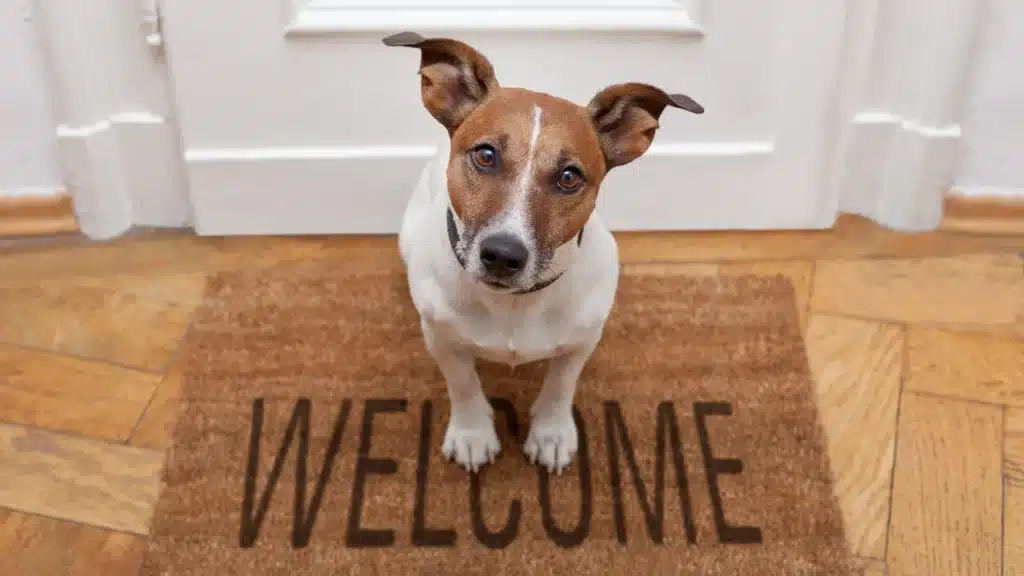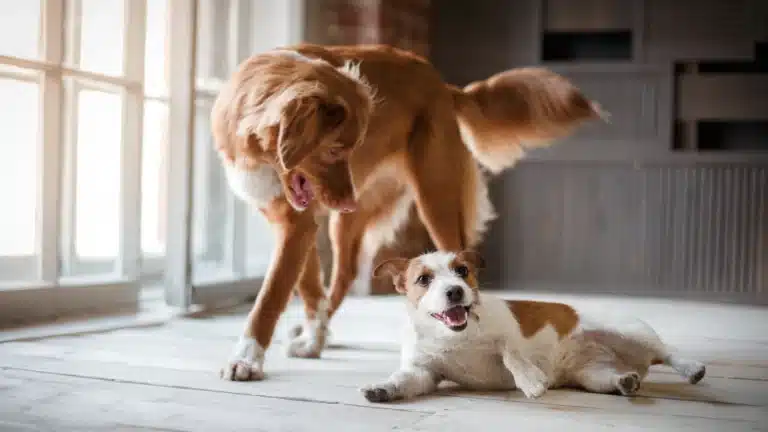Tips for Introducing a New Dog to Your Home

Bringing a new dog home is one of life’s most heartwarming experiences. Whether you’ve adopted a rescue, brought home a bouncy puppy, or welcomed an older dog into your life, this transition is a big deal for both of you.
Imagine entering a new world where everything is unfamiliar: new smells, sounds, people, and routines. That’s exactly how your dog feels. Their first days and weeks in your home set the foundation for their emotional well-being, trust, and bond with you. A well-prepared, patient approach will ensure a smooth transition and set the stage for a lifetime of love and companionship.
Let’s dive into everything you need to know to make your new dog feel safe, secure, and at home.
Prepare Your Home Before the Big Arrival
Before your furry friend sets a paw inside, take time to dog-proof and set up a cozy, welcoming space. A well prepared home means fewer worries and a safer start for your pup.
Create a Safe, Cozy Haven:
Dogs, like humans, need a space of their own where they can unwind and feel safe. This is especially important for rescues or nervous dogs who may be overwhelmed. Set up a quiet, comfortable area with:
- A plush dog bed – Choose one with enough cushioning to support their joints. If they’ve been in a shelter, a soft bed will be a luxury they’ll deeply appreciate.
- Food & water bowls – Place them in a calm, accessible spot to help them feel at ease during meals. Stainless steel or ceramic bowls are best to prevent bacteria buildup.
- A crate or playpen (if using one) – Make it inviting with a soft blanket, some toys, and maybe even a hot water bottle for comfort.
- A few safe toys – Chew toys, plushies, or puzzle feeders will help keep them mentally stimulated and relaxed.
Dog-Proofing Your Home:
- A new dog is like a toddler—curious and unpredictable. To avoid accidents, take these precautions:
- Secure electrical cords – Puppies and anxious dogs love to chew! Use cord protectors or hide wires behind furniture.
- Lock away toxic substances – Household cleaners, human medications, and even certain plants (like lilies, sago palms, and aloe vera) can be poisonous.
- Hide trash cans & food – Dogs are natural scavengers, so a loose trash bin is a buffet waiting to happen! Use pet-proof trash cans or place them in a cabinet.
- Remove small choking hazards – Items like kids’ toys, coins, and rubber bands can be swallowed accidentally.
- Block off restricted areas – If there are rooms or furniture you want to keep dog-free, use baby gates or closed doors.
The Big Day: Bringing Your Dog Home for the First Time
The moment you bring your new dog through the door is exciting but also overwhelming for them. It’s important to keep things calm, controlled, and reassuring.
Car Ride Tips: Make It Comfortable
- Ensure your furry friend is safely secured by using a dog seatbelt harness, a pet carrier, or a sturdy car crate—this will give them a sense of security during the journey.
- Bring a soft blanket or towel that carries familiar scents, ideally from the shelter or breeder, to create a comforting atmosphere for your new companion.
- Keep the environment calm by avoiding loud music or sudden stops, aim for a smooth and relaxed ride home, allowing your pet to settle comfortably.
- If your pet appears nervous, offer gentle reassurance with a soothing voice and calm demeanour, creating a reassuring space that helps ease their anxiety.
First Steps into Their New Home
- Ensure the arrival is serene and unobtrusive—steer clear of loud celebrations or bustling crowds that might overwhelm them.
- Begin by walking them on a sturdy leash, allowing them the freedom to leisurely sniff the fresh air and take in the scents around them before entering the house.
- Once inside, give them some time to explore at their own pace and let them sniff around and investigate the entry way and surrounding areas.
- As they wander, offer small, tasty treats with a gentle, soothing praise to create a positive association with their new surroundings and reinforce their confidence.
This slow and gentle introduction fosters a sense of security, helping them feel empowered rather than anxious in their new space.

Introducing Family Members (Including Kids & Other Pets)
Your new dog will be meeting a whole new family, so take things one step at a time to prevent stress.
Meeting Adults & Kids
- Approach Slowly: When meeting a new dog, it’s necessary to approach at a leisurely pace. This gives the dog time to assess you and feel comfortable. Allow them to come to you on their own terms, which helps build trust and reduces anxiety.
- Avoid Direct Eye Contact at First: Direct eye contact can be sensed as a threat or challenge in dog behaviour. Instead, maintain a soft gaze, frequently blinking or looking slightly away. This demonstrates that you mean no harm and helps the dog feel safe around you.
- Use a Calm, Friendly Voice: The tone of your voice is important for how a dog sees you. Instead of using high, excited tones that might stress them out, speak softly. Calm and gentle words can help the dog feel safe and comfortable.
- Supervise Young Children: When young children are around, it’s important to teach them how to be gentle with dogs. Show them to extend their hand so the dog can sniff it before they try to pet the dog. Encourage them not to grab or hug the dog right away, as this can feel tight and scary for the dog, especially if they haven’t built a bond yet.
- Respect Their Space: Each dog has its own comfort level with personal space. If a dog seems unsure or backs away, do not trap them. Give them time and space to come to you when they feel ready. This helps create a positive interaction and allows the dog to feel more in control of the situation.
Introducing Other Dogs
When introducing a new dog to an existing pet, it’s important to approach the process thoughtfully to ensure a smooth transition. Here are some guidelines to follow:
- Choose a Neutral Location: Choose a space where neither dog feels at home, like a park or a backyard. This can help calm them down and make the meeting go better.
- Use Leashes to Maintain Control: Keep both dogs on leashes to stay safe, but let them relax. Hold the leashes loosely, not tightly. Let the dogs sniff and observe each other from a safe distance.
- Observe Body Language: Watch the dog’s body language closely. If a dog is relaxed and friendly, you will see a loose, wagging tail, relaxed ears, and playful behaviour. However, if a dog becomes stiff, growls, or raises its hackles, give them space to prevent tensions from rising.
- Facilitate Side-by-Side Walking: Walk the dogs side by side first. This lets them get used to each other without the stress of direct interaction. Keep the pace slow and calm to create a relaxed atmosphere.
- Keep Initial Interactions Brief and Positive: When it’s time for direct engagement, keep the initial interactions short to prevent overwhelming either dog. Aim for a few minutes of positive interaction, then separate them while both are still in good spirits. Ending the session on a positive note strengthens their relationship with each other.
Meeting Cats
Dogs and cats can form deep and rewarding friendships, but their introductions must be considered carefully.
- Keep your dog on a leash at first: This helps you control your dog and prevents any quick movements that might scare your cat. A leash lets you easily guide your dog away if they become too excited or curious.
- Provide your cat with an escape route: Cats feel safer when they can escape to higher places. Use high shelves, cat trees, or perches to create safe spots where your cat can watch without feeling scared. This can help your cat feel more secure during introductions.
- Facilitate observation from a distance: Let your pets see and smell each other without touching at first. You can keep them apart with a baby gate or a cracked door. This allows them to be curious but reduces stress. Only bring them closer when both pets seem calm and relaxed.
- Reward calm behaviour with treats and praise: Ensure that you have plenty of treats on hand. Offer them to both pets when they display calm and relaxed behaviours around each other. This positive reinforcement encourages them to associate each other’s presence with positive experiences.
To help your dog and cat live together peacefully, take your time and stay patient. Use positive rewards to encourage good behavior. Keep in mind that each pet is different, so the time it takes to adjust may vary.
Establishing a Routine
Dogs thrive on routine and repetition. Having a clear daily routine helps them feel secure and aids in their training.
Mealtime Routine
- Establish a Feeding Routine: Feed your dog at the same time and location daily. This practice helps prevent overeating and encourages your dog to anticipate mealtimes, making them more likely to eat their meals promptly.
- Choose Quality Nutrition: Select high quality dog food specifically formulated for your dog’s breed, age, and health needs. This ensures your dog receives the essential nutrients for optimal growth and energy.
House Training & Bathroom Breaks
- Make it a routine to take your dog outside as soon as you wake up in the morning, immediately after meals, and just before bedtime. This establishes a reliable schedule that reinforces good potty habits.
- Pick a specific area in your yard or nearby for your dog to relieve themselves. Take them to this spot regularly so they learn to associate it with potty time. When they successfully go there, give them praise or a small treat to encourage them to do it again.
- Accidents are a normal part of training your dog, so be patient. Instead of punishing your dog for mistakes, gently guide them to the right place. If an accident happens, clean the area well with an enzyme cleaner to get rid of any smells that might lead them back to that spot. This helps keep a positive environment for learning.
Bedtime & Sleeping Arrangements
- Choose a Consistent Sleeping Spot: Create a specific spot for your pet to sleep, like a cozy crate, a soft bed, or a corner in your room. This routine makes them feel safe and gives them a special place that is theirs.
- Create a Calm Nighttime Environment: Make sure the nights are calm and relaxing. Dim the lights to create a peaceful atmosphere, and keep noise low to avoid scaring your pet. You might use a white noise machine or play soft music to block out any loud sounds.
- Offer Comfort During the Night: If your pet cries or seems anxious during the night, provide them with a comforting object. A warm blanket or a soft toy can offer reassurance and help them feel more secure in their sleeping environment.
- Establish a Structured Daily Routine: Creating a daily schedule for your pet can help them adjust to their new home. Set regular times for feeding, playing, and walking. This routine can reduce stress and provide a sense of stability for your pet.
Bonding & Building Trust
Building trust is like growing a friendship; it takes time, patience, and love.
Ways to Strengthen Your Bond
- Spend quiet time together—reading, relaxing, or simply being present.
- Engage in daily walks to explore the world together.
- Use positive reinforcement training (treats, praise, and play).
- Play interactive games like fetch, tug-of-war, or hide-and-seek.
If your dog is fearful or shy, move at their pace. Respect their comfort zone, and let them build confidence over time.
Addressing Common Challenges
- Separation Anxiety: Start with short absences and gradually increase time away. Leave comforting items (like a shirt with your scent).
- Excessive Barking: Identify the trigger and use redirection techniques (training commands, distractions).
- Chewing & Destructive Behavior: Offer appropriate chew toys and plenty of exercise.
Bringing a new dog home is an amazing journey filled with learning, patience, and unconditional love. With the right preparation, a structured routine, and lots of love, your dog will soon feel like part of the family.
Take it slow, be patient, and cherish every moment—before you know it, you’ll have a loyal best friend for life.
